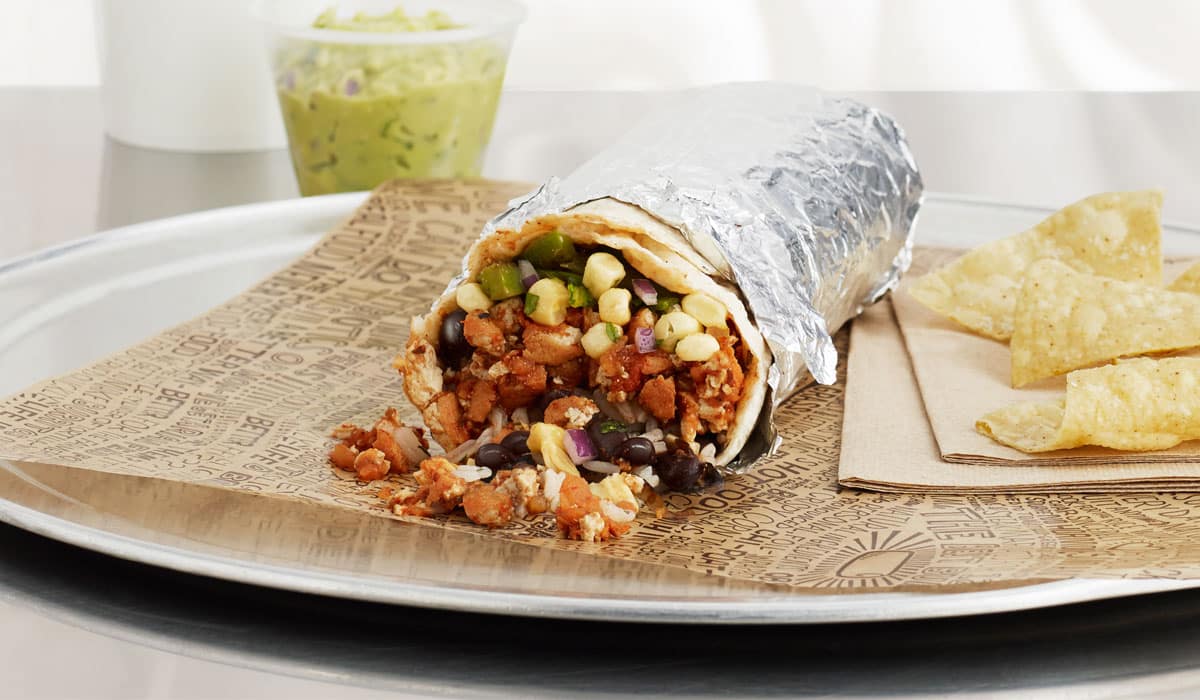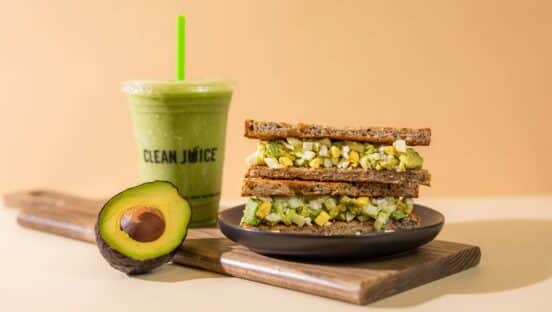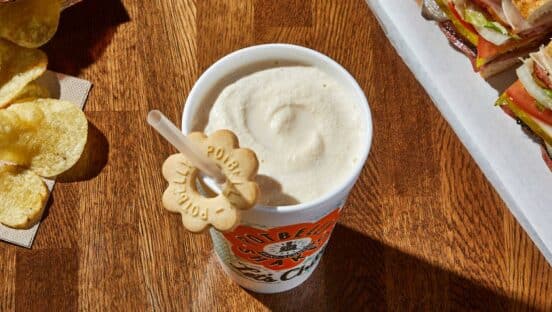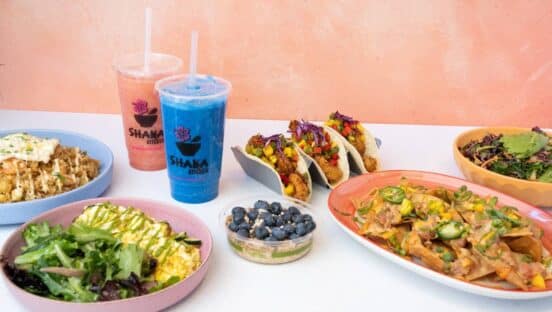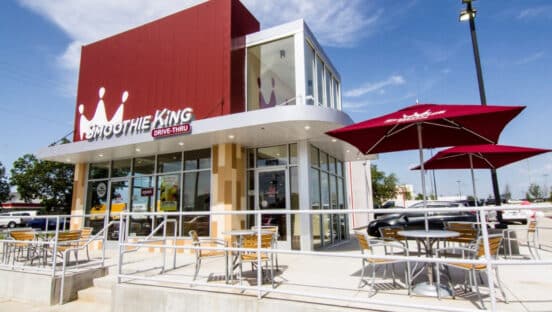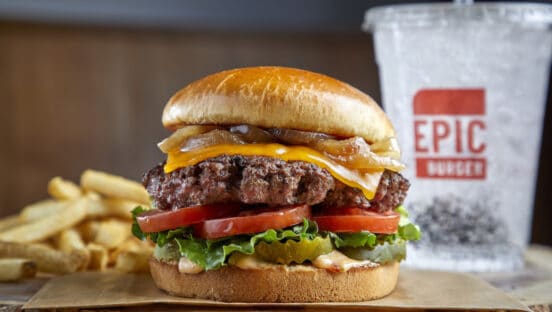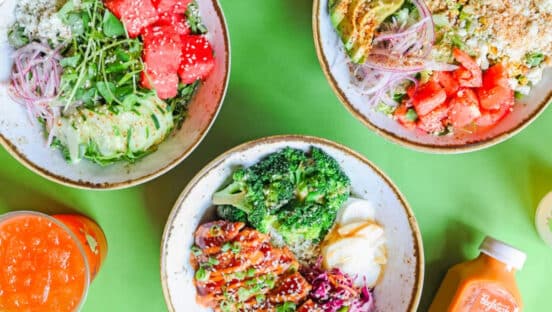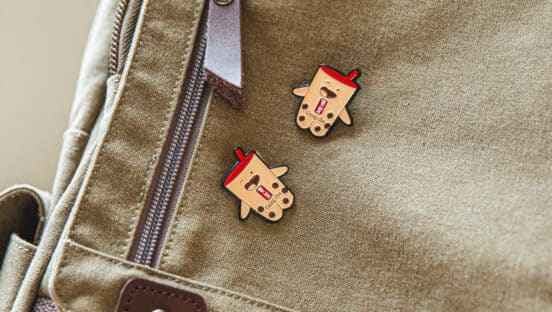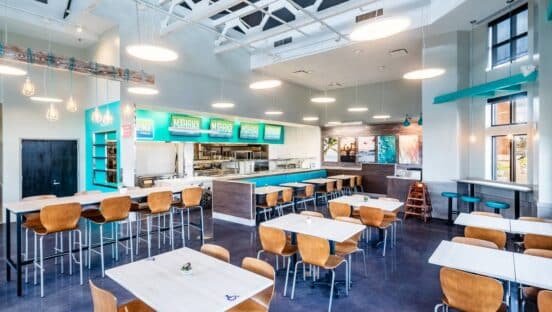It would be “an absolute home run,” Chipotle CEO Brian Niccol said. As markets reopen, can restaurants retain digital business souped-up by COVID-19? How much of that necessity-fueled growth will stick?
Niccol, speaking Tuesday during the virtual Evercore ISI Virtual Consumer & Retail Summit Conference, said close to 40 percent of Chipotle restaurants have now reopened dining rooms—a process that’s sped up after a tepid start. It was 30 percent 10 days ago. By the numbers, 40 percent would equal roughly 1,055 locations.
While it’s still (very) early days, Niccol said, Chipotle has seen 70–80 percent of added digital gains remain at these units.
If that turns out to be a long-term reality, it would provide a significant boost for a brand that came into 2020 enjoying its best average-unit volumes ($2.2 million) since 2015 ($2.425 million), when food-safety woes landed toward the end of the calendar. Chipotle’s year-over-year same-store sales also tracked in the double-digits for three consecutive quarters—it was 9.9 percent the period before that—and surged 14 percent in Q1 before three weeks of coronavirus sent results to negative 3 percent.
While Chipotle didn’t put an exact figure on the digital growth during COVID-19 so far, it’s easy to see why the possibility excited Niccol.
The brand hasn’t provided a sales update since its Q1 report, a three-month period that ended March 31. Yet in that final, COVID-soured month, Chipotle began offering free delivery at the midpoint and shifted media spend from live sports to online and streaming platforms. It announced a national delivery partnership with Uber Eats as well. As a result, along with stay-at-home mandates flooding the landscape, Chipotle’s digital mix in March jumped 102.6 percent, year-over-year, to 37.6 percent of total sales. (Overall comps slid 16 percent for the entire month after falling negative 34 and 35 percent, respectively, in the final two weeks).
Chipotle’s digital business upped 81 percent across all of Q1 versus 2019 levels to $372 million—its highest quarterly level in company history, or more than quadruple what it was three years ago. Just the previous Q4, digital comprised only 12.9 percent of Chipotle’s total take.
So while we don’t yet how much the 70–80 percent hold represents to a dollar point or how much reopened dine-in business is producing at a limited capacity, it’s safe to assume the digital uptick is a sizable number. Chipotle reports Q2 results on July 22
Niccol did provide some additional color. Before COVID-19, Chipotle generated roughly $400,000 in per-store business from its now-systemwide second make-lines, intended for digital orders. Some units pushed as high as $1 million.
When asked if Chipotle eclipsed those totals in recent weeks, Niccol simply replied, “yes.” He then added another “yes.”
He also noted the fast casual essentially tripled digital transactions overnight.
“As we recover the dine-in business, we’re watching this really closely, because this has been our belief all along,” Niccol said. “We thought it was going to take a couple more years before we get to these levels of digital.” Chipotle passed $1 billion in digital sales last year.
There are other reasons to believe the elevated digital run won’t pulse out. Niccol shared a recent anecdote from a dine-in guest at one of Chipotle’s reopened restaurants. The customer told him he decided to come in because he was tired of eating in his car and wanted a break.
“So, there still is that dine-in occasion that exists, which is not proving to be cannibalistic to a digital occasion,” Niccol said.
Also, Chipotle’s digital business speaks to new guests that weren’t in its flywheel before. Niccol said orders have skewed more toward dinner, larger groups, and the weekends. All were previous soft spots for Chipotle.
“The thing I’ve just asked our team to stay focused on, is let’s be aggressive and stay on our front foot on this because I think there’s tremendous opportunity for Chipotle to really grow through all of this,” CEO Brian Niccol said.
Niccol added COVID-19 gave its rewards program a jolt. The platform turned a year old in March and already has 13 million members.
For perspective, Starbucks’ industry-fronting Rewards platform, which attributed 48 percent of total U.S. corporate tender in the last week of May, grew to 19.4 million active users in Q2.
If you rewind the tape on Chipotle, though, one of Niccol’s biggest concerns when he left Taco Bell about two years ago was awareness. He called Chipotle “invisible.”
Beyond the marketing and cultural conversation shortcomings, Chipotle’s digital footprint was essentially nonexistent.
And as that latter element built up, through second make-lines, delivery, mobile app, rewards, pickup shelves, etc., customer education proved a stark gap, since it wasn’t embedded in the brand’s history. In October 2018, Niccol said Chipotle’s was at “less than 50 percent awareness” with regards to customers and its digital platforms.
That was changing pre-pandemic, and it’s only picked up since. Delivery is perhaps the best trigger. Stay-at-home directives encouraged new off-premises customers since they had to replace dine-in occasions.
Chipotle has flipped free service on and off throughout. Niccol said absorbing the cost is worth it because it’s surged first-time delivery users. It provides incentive to those new, browsing guests. And once they make the leap, they stick, he said.
As long as that’s the case, Niccol said, free delivery supports the investment.
There’s room to grow, too. He said Chipotle recently discovered it’s “one of only a few” restaurants that have the same menu prices in restaurants as they do for delivery.
“And most customers don’t realize that but if you go through and do a side-by-side comparison, some of the restaurants are out there charging 20 percent, 25 percent, 30 percent higher menu prices, including some of the other fees,” Niccol said. “So, there’s a lot of levers that we can pull. And we’re confident that we can pull a few levers to make sure we can offset some of these acquisition costs and still have the attractive margins …”
He said Chipotle is already asking itself how it can take this boosted delivery business into a post-COVID-19 world. From different ways to pay for the service, fees to menu prices, and so forth. The “levers” Niccol mentioned. In other terms, Chipotle can start focusing less on customer acquisition for delivery and more on profitability.
Either way, Chipotle plans to exit the pandemic with a more robust digital ecosystem. Between delivery and rewards growth, learnings will unlock CRM opportunities from a marketing standpoint that simply weren’t there a few years ago.
It’s something Niccol and Chipotle are calling “journeys,”—ways the brand can incentivize behavior and impact frequency off scale once it collects customer data. He credited Domino’s as being one of the best in the business at this.
“Hopefully, in a year or two, you’ll be asking people to compare themselves to us,” Niccol said.
[image source_ID=”127733″]
Menu changes, drive thrus, growth potential
Niccol hinted at some menu innovations coming down the pipe. One is juices and teas, although he didn’t delve further details. The other is a quesadilla that’s currently testing in Cleveland and Indianapolis.
But what makes that specific pilot unique is Chipotle is running the option as a digital-only offering. It won’t be on the front line; just the second make-line in the back. Niccol believes quesadillas will be a hit with families grabbing food on the way home. “It will take some education to inform people that quesadillas are aren’t on the front line, but consumers aren’t fighting the idea of having to order in the app or on the web in order to get a quesadilla,” Niccol said.
It’s also a process that fits Chipotle’s progressing real estate. In Q1, the company opened 19 restaurants. Eleven of those featured a “Chipotlane.” CFO Jack Hartung said these could represent as much as 70 percent of the brand’s growth in the near future, up from previous calls of 55 percent.
By July or so, the brand will have 100 Chipotlane locations scattered across the system—a fact that would have felt mythical a decade ago. Of those, only 10 count in Chipotle’s comps base (restaurants in operation for at least 13 full calendar months).
“So, it gives you an idea of how fast we’ve gone from kind of zero to 110 mph,” Hartung said Wednesday.
COVID-19 has presented more runway to grow. Hartung said those 10 restaurants are comping “in the neighborhood of double” versus typical stores, with a mix of pre- and during-coronavirus sales.
At restaurants with Chipotlanes, the sales pattern overall is about 20 percent higher, he added. It was roughly 10 percent before the pandemic, and closer to 30 percent since.
Hartung says the experience resonates with guests because they can order ahead, show up at an exact time, and pick up food without any delivery fees. Additionally, unlike typical drive thrus, there’s no queue of cars lined up because people can’t order at the window. “The Chipotlane is showing up in a big way during this this global pandemic and you’re going to see a lot more Chipotlanes in the future for sure,” Hartung said.
To date, Chipotle hasn’t noticed a lot of high-quality sites hit the market due to the pandemic, Hartung said. Closure real estate has mostly resulted from mediocre or poor performers.
However, the near-term opportunity might not lie with shuttered stores, Hartung said, but rather in sites that were in the deal phase that operators walked away from. Sites that were going to be a future restaurant.
“And now they’re going to be a future Chipotle and then on top of that, they’re going to be a future Chipotle with a Chipotlane,” Hartung said. “Because when we get in a line that somebody else vacated, we tell the landlord, we’d like to be here, but we need our Chipotlane, I know it’s an endcap; we’re going to have to change the way things flow around that restaurant. But if you can give us a Chipotlane, we’ll do the deal.”
“The thing I’ve just asked our team to stay focused on, is let’s be aggressive and stay on our front foot on this because I think there’s tremendous opportunity for Chipotle to really grow through all of this,” Niccol added.
Chipotle opened a company record 80 locations in Q4 and, before COVID-19, expected to bring 150-165 to market in 2020.

